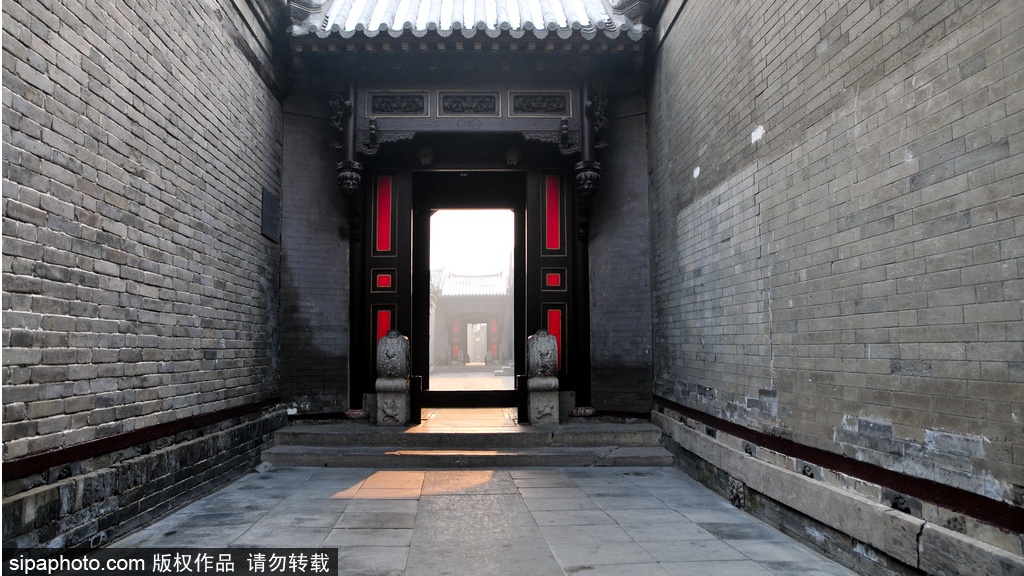
Once famed for its unique style of woodblock printing, the ancient town of Yangliuqing is now drawing crowds with its well-preserved traditional architecture, Yang Cheng reports in Tianjin.
The first thing that usually springs to mind when people hear the name Yangliuqing is woodblock printing, because the small town on the outskirts of Tianjin is famous for its individual style of printing that dates back more than 400 years to the Ming Dynasty (1368-1644).
Literally meaning "poplar willow green", Yangliuqing is a settlement with over 1,000 years of history which is considered to be the origin of the sprawling northern Chinese port city of Tianjin.
Tan Ruwei, a renowned historian and folk culture expert from Tianjin, says: "Yangliuqing is one of the most unique and important cultural landmarks in Tianjin and North China. The water transportation trade along the Beijing-Hangzhou Grand Canal helped to boost the town's growth."
Thanks to the canal, the town enjoyed unparalleled prosperity from the Song Dynasty (960-1279) onward and continued to thrive well into the Qing Dynasty (1644-1911).
"This commercial prosperity fostered cultural awareness and helped the local people there to develop an inclusive and innovative spirit toward business and the arts," he says.
Renovated in recent years, the streets of Yangliuqing ancient town are home to an array of well-preserved old buildings that travelers can wander through and soak up its evocative atmosphere.
Along the main streets of the old town, visitors often come into close contact with local folk artists and watch them demonstrate their cultural arts. Visitors can talk to the artisans about the techniques they use to produce the Lunar New Year paintings that people hang on their walls to bring good fortune, and allow the artists to share their years of experience.
At Yucheng's Woodblock Print Shop, which was founded by the late Huo Yutang, a renowned inheritor of Yangliuqing woodblock printing, visitors can view the artworks made by his son Huo Qingshun, who is now China's top woodblock printing expert.
The 67-year-old artisan used to bemoan the fact the renowned Yangliuqing Fine Arts Press, which helped the town find fame for its woodblock printing, had relocated to downtown Tianjin.
"I held out hope for many years that the press would return to the ancient town from Tianjin, and I was very glad when I heard they were planning to move the press back here in the future."
Exploring history
The town is worth visiting as it is an ideal tourist destination to explore the region's rich history, and the Shi family residence is a good example of its enduring appeal.
Built in 1875, it is now one of the few well-preserved civil buildings from that era remaining in the area, earning it the title of "top residential courtyard in North China".
In this courtyard, the family of North China's once most wealthy businessman witnessed its rise to prosperity and later decline, and the story of the family's legendary roller-coaster ride often prompts visitors to stop and contemplate.
"When the family owner died, the family didn't even have the money to organize a proper funeral," a local history expert says.
Shi's family residence served as the headquarters of the Beijing-Tianjin campaign, one of three key battles during the liberation of China, which was used as a base from 1948 to early 1949.
It was also the site where the first Tianjin government was founded, and where the first corruption case after the founding of New China in 1949 was cracked.
Near there, the An family courtyard has now been turned into a private museum.
The owner An Wenzhong (1852-1942) was one of the finest commercial minds in Chinese history, because his business was to provide supplies and food to the army forces led by Zuo Zongtang (1812-85) on his march and campaign to protect then area of Xinjiang.
He led a group of local Yangliuqing residents to transport a vast number of supplies to support the government's army march from Tianjin to Xinjiang and back, a strenuous journey of more than 6,000 kilometers that took place during the late Qing Dynasty.
Since there were no vehicles at that time, his team relied on the support of packhorses and camels, and many members of the group had to complete the journey on foot.
The An family's story has been adapted into several TV dramas and films and is well documented in the history books.
Having survived the vicissitudes of history, the ancient town now enjoys a number of newly opened tourism spots.
A museum of folk customs opened last year and many historic buildings-including pavilions, pagodas, temples and theaters-have been renovated and preserved for the future.
Yangliuqing is a popular location for film and TV shoots. As well as the preserved buildings, many locations in the town feature period replica architecture, which attracts filmmakers.



